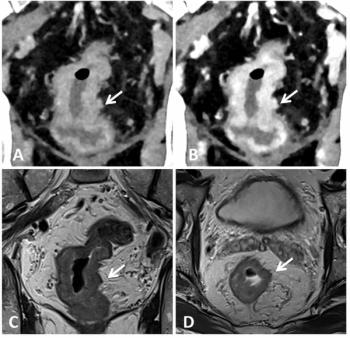
PET/CT proves better than MRI for cervical cancer therapy decision making
An analysis of imaging data suggests that PET/CT should be the modality of choice for directing cervical cancer patients to appropriate therapy.
An analysis of imaging data suggests that PET/CT should be the modality of choice for directing cervical cancer patients to appropriate therapy.
Dr. Garry Choy, a radiology resident at Massachusetts General Hospital, looked at four options for pretreatment evaluation of stage IB cervical cancer patients: no imaging, MRI alone, PET/CT alone, and MRI and PET/CT in combination.
He constructed a decision-analytical model to study a hypothetical patient cohort involving clinically operable cervical cancer with no palpable lymphadenopathy and no evidence of parametrial extension detected during a pelvic exam.
Choy drew from data generated from MRI trials conducted earlier this year by Dr. Hedvig Hricak, chair of radiology at Memorial Sloan-Kettering Cancer Center, and a 2006 PET/CT study by Dr. Sandro Sironi of the University of Milan-Bicocca in Italy. Hricak found that MRI's sensitivity and specificity for characterizing parametrial extension were 47% and 79%, respectively, and 37% and 94%, respectively, for identifying lymph node metastasis. In Sironi's study, PET/CT was 73% sensitive and 97% specific for detecting lymph node metastasis.
Results from imaging exams lead treating oncologists to adopt one of several possible therapies, according to Choy. Radical hysterectomy is the logical treatment scenario when no parametrial extension or evidence lymph node evidence is seen. Chemoradiation of the pelvis and para-aortic region is typically prescribed when imaging uncovers evidence of lymph node metastasis with or without a finding of parametrial extension. Chemoradiation of the pelvis alone is the usual choice for parametrial extension without evidence of lymph node metastasis.
PET/CT was demonstrably better at directing patients to correct therapies than no imaging, MRI, or PET/CT combined with MRI. Clinicians chose the optimal treatment regime for 89% of patients based on their reading of pretreatment PET/CT. Decisions made without the guidance of imaging led to optimal treatment for 82%. MRI led to the correct therapy for only 68% of patients, and the combination of PET/CT and MRI led to the correct choice for 74%.
Choy attributed PET/CT's performance to its high sensitivity compared with MRI for detecting lymph node metastases. MRI's relative insensitivity led to more false positives and negatives during patient triage, he said.
Choy found little difference in the five-year survival of patients for the four imaging options. Patient survival for each approach was about 93%. PET/CT and MRI were equally adept at sparing patients unnecessary trimodality therapy (surgery followed by chemoradiation). Both ruled out that option for 92% of the patients. When used together, PET/CT and MRI spared 95% of patients.
Newsletter
Stay at the forefront of radiology with the Diagnostic Imaging newsletter, delivering the latest news, clinical insights, and imaging advancements for today’s radiologists.



























